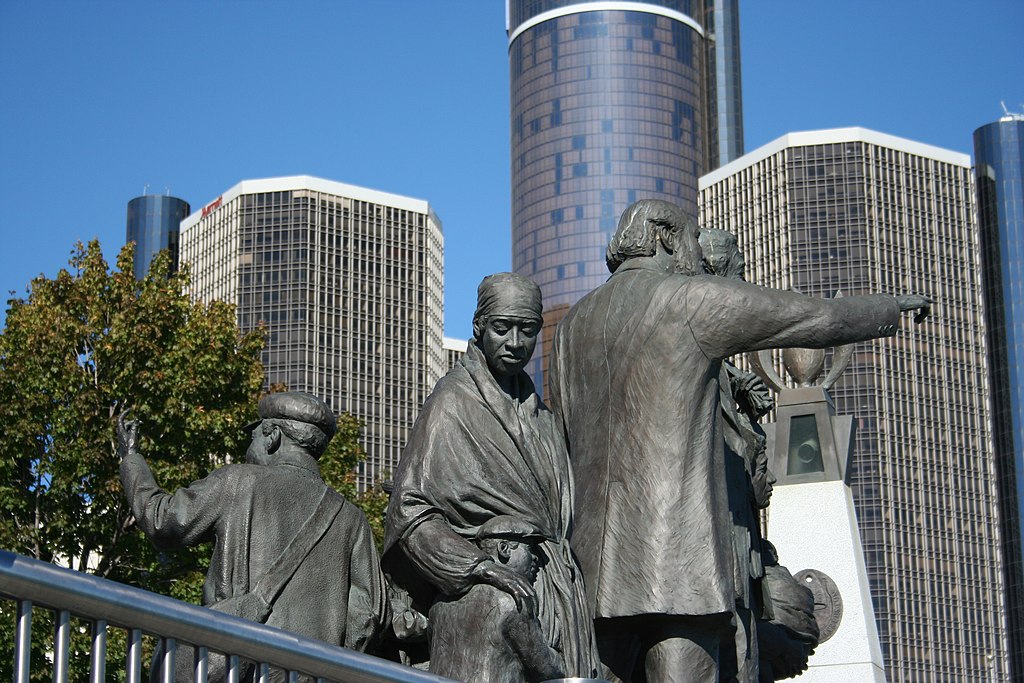The monument itself is a bronze sculpture created by artist Ed Dwight, who was the first African American astronaut candidate and is a renowned sculptor and historian. The sculpture is replete with evocative figures, depicting a group of slaves ready to cross the Detroit River to Canada, with their faces turned toward the light of freedom. Their expressions are a mix of determination and hopeful anticipation as they are about to embark on the final leg of their perilous journey.
Beside them stands George DeBaptiste, a prominent Detroit resident who was instrumental in the Underground Railroad network. He is portrayed with his hand outstretched towards Canada, symbolically guiding the fugitives to their freedom. The monument also features a Quaker woman, representing the critical role that many religious groups, including Quakers, played in aiding slaves.
The Detroit River itself was a significant barrier to cross, and the monument’s placement at the riverfront is no coincidence. It faces Windsor, Ontario, across the river, where a corresponding monument, the Tower of Freedom, stands as the Canadian counterpart.
The Underground Railroad was a network of secret routes and safe houses established in the United States during the early to mid-19th century. It was used by African American slaves to escape into free states and Canada with the aid of abolitionists and allies who were sympathetic to their cause.
Detroit’s geographic location, just across the river from Canada, where slavery was prohibited, made it one of the last “stations” on the Underground Railroad. The city earned the nickname “Midnight” — code for a terminal on the Railroad — and became a pivotal point of passage. The Detroit River, while narrow, represented the final physical obstacle to liberty for many.
The Gateway to Freedom Memorial commemorates this rich history and the courage of those who risked everything to escape bondage. It not only celebrates their indomitable spirit but also honors the legacy of those who supported the cause of freedom, sometimes at great risk to their own lives.
The creation of the memorial was a collective effort, involving historians, community leaders, and the Detroit Riverfront Conservancy. It serves as an educational tool, a place of reflection, and a site of inspiration for current and future generations to understand the importance of the fight for freedom and human dignity.

